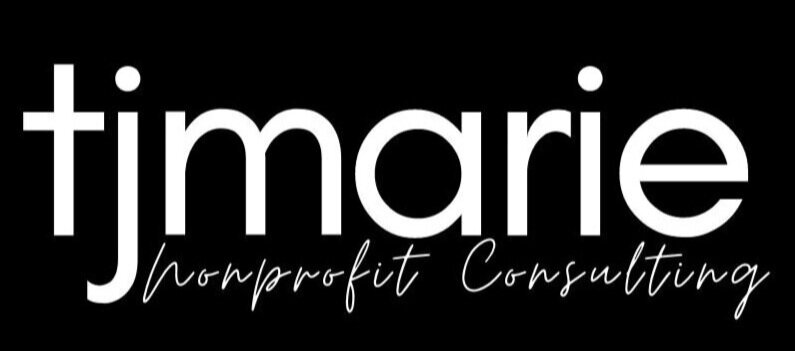PLANNING YOUR NONPROFIT'S FUNDRAISING YEAR
There's a reason we're starting the new year with all things planning. It is how we approach every single engagement with our clients. It's how we approach our business growth strategy. At TJ Marie Consulting, it all begins with a plan.
This month, we'll be exploring the ways nonprofits can think about a fundraising strategy that ensures preparedness for the year and beyond.
Before we get started, a few notes: A fundraising plan is not a strategic plan. Ideally, a nonprofit organization has already developed a strategic plan, and its fundraising plan supports its objectives with a roadmap for philanthropic and financial support.
Let's dive into our recommendations for the three main steps you can take to begin creating a fundraising plan for your nonprofit:
Begin with the end in mind. This concept, borrowed from the popular book The Seven Habits of Highly Effective People, is the first step. Start with your organization's strategic plan and answer two questions: What is the organization's financial goal? What are the administrative or operational goals for fundraising that will enable us to achieve them? We'll work backward from here to develop a plan.
Example: Puppy Patrol Charity needs to raise a total of $750,000 in philanthropic revenue to fund its projects this year. Administrative objectives include establishing prospect portfolios, incorporating givly for micro-fundraising, and establishing a corporate giving program.
Create a timeline and divide activity by quarters. Working in calendar quarters makes big lofty projects more manageable. First, add the majors: the events, projects, big deadlines that your organization will undertake this year.
For example, Puppy Patrol Charity has one annual event in March, sponsors a charity walk in July, and has a big adoption weekend in November. The annual appeal runs from May through August, and there's a big grant it applies for annually that's due in September.
Secondly, add the minors. The minors are secondary events or projects that the organization might participate in, but they aren't in themselves directly integral to its fundraising success. These might be national giving days, small cultivation events, or important board meetings.
Work backward to create activities and benchmarks. There are several strategies you might use to get started. One method is to take the goal, determine the percentage increase from last year, and add it to each major. Another is to add a funding element that doesn't currently exist, like applying for grants or an individual giving program that can generate more revenue and help the organization reach its goal. A third idea might be to increase the solicitation amounts for an already established giving program.
The main point to remember here is this: You can't increase the fundraising goal but leave operations and donor engagement as they were in the previous year. There must be something added to the operations or fundraising to account for any fundraising goal increase.
For example, This year, Puppy Patrol will ask its top 20% of donors to consider gifts representing a 10% increase from last year, as the organization's goal increased by 8%. This year, Puppy Patrol will add making phone calls in advance of its annual walk to recruit more participants to secure 15% more revenue from the event. This year, PPC will increase its goal by 10% and fill the one open board position.
As you plan your organization's fundraising strategy, be sure to consider:
Donors. We'll take a deeper dive into donor engagement in April, but for now, as you're planning, ask yourself:
What individuals, corporations, foundations are our current and potential donors?
By what methods will we engage our donors? Will we make phone calls? Send emails? Ask for zoom solicitation meetings?
Which internal staff persons or board members, or other volunteers will participate in donor engagement and how?
In what ways will we cultivate and steward donors? (add to calendar)
In what ways will we recognize donors for their support?
Case and Messaging. A case for support is a written document that essentially explains why the organization is raising money. The case should be tangible and should describe the impact of the organization's work. The case is the story and should include an opportunity for a potential donor to invest in the mission. We'll focus on case writing in March.
Accountability and Tracking. Schedule regular meetings or check-ins for internal teams to encourage accountability and benchmarking. Each action item should be assigned to a person who will make it among their priorities. Adjust the plan based on the quarterly benchmarks you created in point 3.
Fundraising planning will look different for organizations based on their strategic plan, size, sector, and needs. No two fundraising plans will be the same, and obviously, more established organizations will have more layers, and each major will have its own plan.
We help nonprofits craft tailored fundraising plans. If you'd like to discuss working with TJ Marie Consulting, let's set up an introductory call!
Be sure to follow TJM on YouTube, and Instagram, where we'll be sharing much of the content and free resources. Lastly, if you're not on the email list, you will miss out! I'll be opening the schedule for free coaching sessions, and you won't want to miss it!

